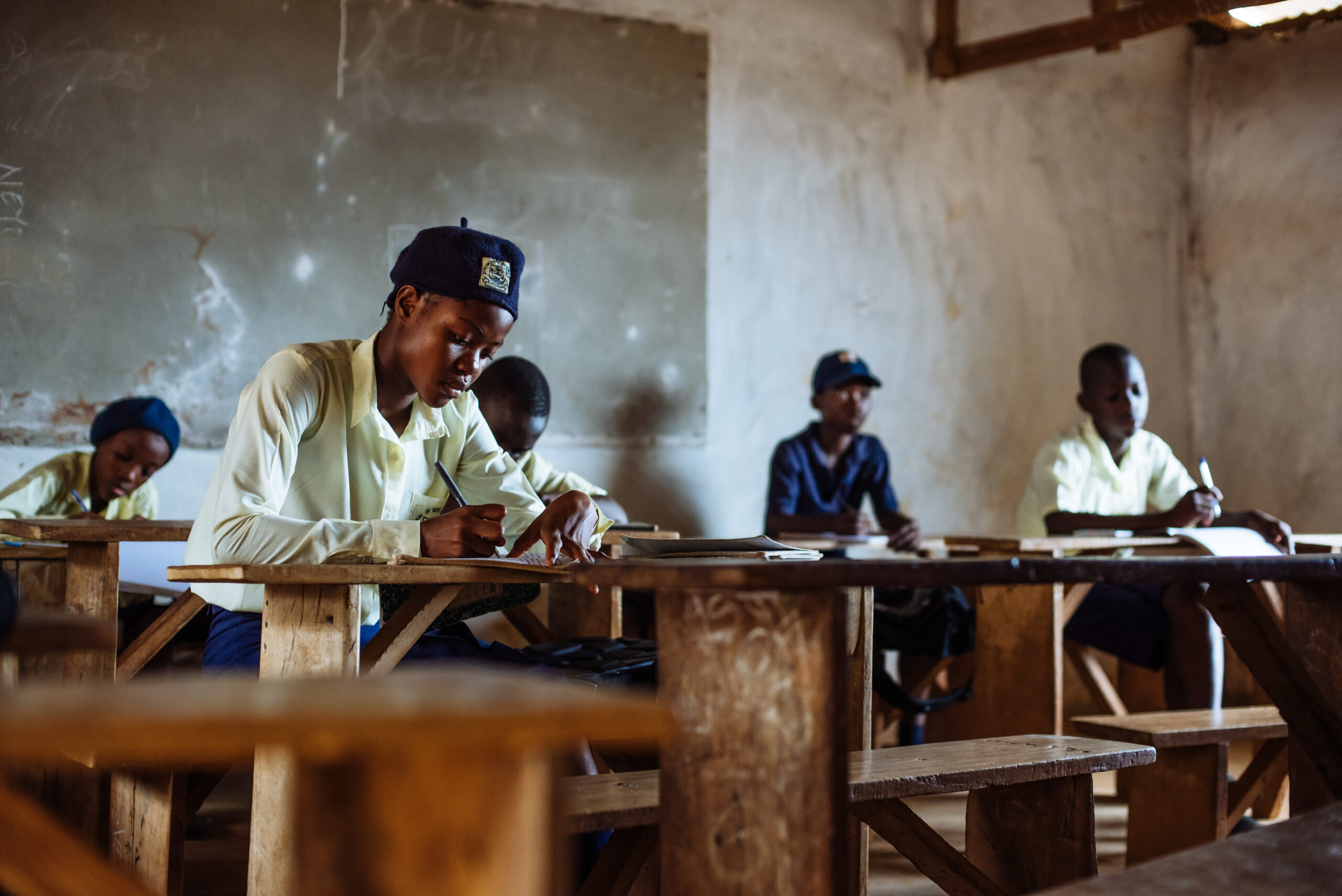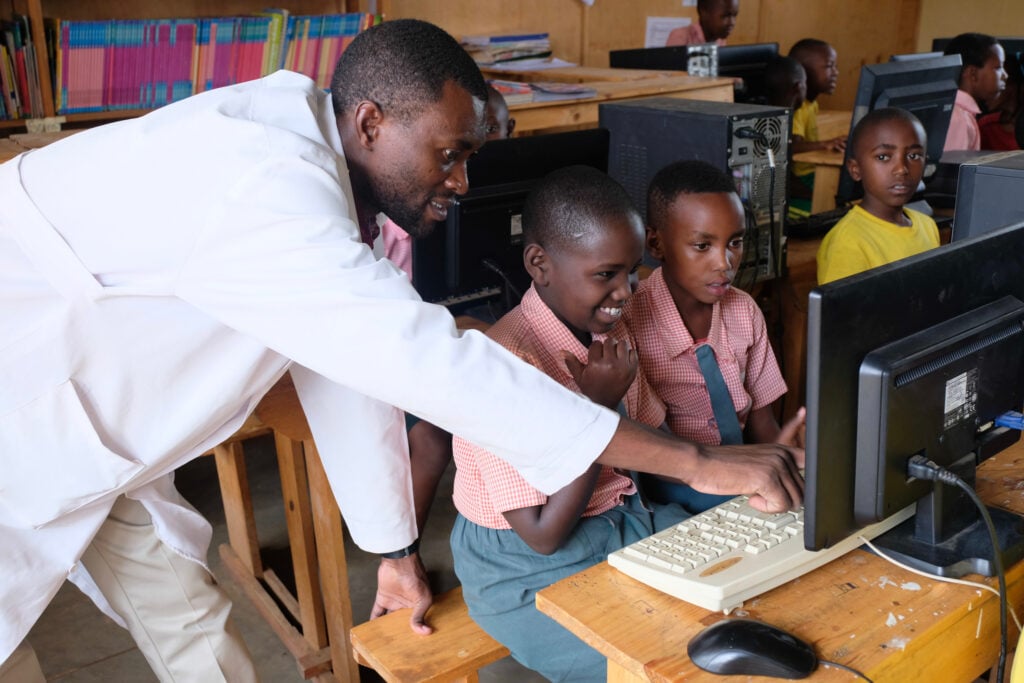All around the world, hundreds of thousands of non-profits, charities, and international organizations are working to solve some of the greatest challenges in education, food security, water, and health services. With all the players at work, sometimes it’s hard to differentiate between them or know there might be a difference in what they do. Especially in times of crisis, there are many responders.
Development and Relief
Two categories of non-profit organizations come to the forefront: development and relief.
In April 1994, following the planned assassination of President Habyarimana, Rwanda was engulfed in a three-month-long genocide killing upwards of 1 million people. Over 40 percent of the population had lost their lives or fled the country.
Immediately following the Rwandan genocide, relief organizations stepped in to bring aid by providing shelter, food, and set up impromptu clinics to treat the emergencies of war. Millions of Rwandans fled to neighboring countries where refugee camps were established, all with their own challenges and needs. With the infrastructure of Rwanda in shambles, development organizations began physically rebuilding from the rubble. They also taught agricultural skills to generate a new sector of employment, provided economic stimulation, helped broker peace deals between warring factions, and promoted education to reconstruct the traumatized and war-torn country.
Other global and national crises highlight the roles of both relief and development in responses. The Ebola outbreak in West Africa, Hurricane Katrina in the United States, world wars, and now, most recently, the pandemic of the novel coronavirus.
We’ll unpack the role of development and relief and highlight Edify’s work as an international development organization and our current scope of work in light of today’s crisis.
What is Development?
International development—also referred to as development—is a field of study, practice, industry, and research. Its central, broad concept is to grow economies, analyze, measure, and alleviate poverty, and improve living conditions or quality of life. International development also categorizes countries based on economic, social, and political factors, giving way to contemporary classifications like: ‘developing,’ ‘emerging,’ ‘least developed,’ and ‘developed.’
International development has, historically, been viewed as solely an economic practice. But in the past two decades, development work has begun to encompass concepts like human development, human rights, inequalities, peacebuilding, and power dynamics. This shift is tied to the growing belief that poverty should be defined not just in economic terms, like income, but also in social and political terms. Concepts like freedom, opportunities, and dignity are a factor in deprivation and the cycle of poverty.
International development stresses sustainability in the process of improving the quality of life. It aims to strengthen communities and nations, so they can create solutions to problems they face on their own, without continued outside involvement or support. International development looks at long-term, sustainable solutions to the world’s most pressing challenges in poverty, conflict, food security, access to clean water, and disease. There are also markers that the international community uses to assess development. International development organizations like the United Nations have created global goals, like the Sustainable Development Goals, with targets and dates to achieve these marks.
At Edify, we look at education and how many students are receiving a poor-quality education or are not in school altogether. Poor education outcomes have been happening for decades in regions where poverty is also a pervasive challenge. Yet education is one of the most successful poverty alleviation tools capable of improving one’s quality of life and the opportunities available to students in the future. But often, in developing countries, a quality education is hard to find. Overcrowded classrooms, untrained teachers, or not enough supplies all impact a student’s ability to learn. By working to improve and expand education through helping schools gain access to the resources they need, this is an example of development work.
Development interventions also involve substantial local participation, knowledgeable training, sharing of resources, and building of local networks.
One component of what makes development work sustainable is a deep understanding of a region’s specific needs and context. And then ensuring strategies and approaches are tailored to what they need. Edify hires national, in-country staff in each of our operating countries. Local leaders know and understand their country and its challenges better than those from the outside ever could. Edify also creates networks and partnerships of local training and lending organizations. Sustainability is key in development work. Contextualization and local leadership is just one way we’re working towards all our partner schools being able to stand on their own and flourish.
What is Relief?
Often, relief organizations are the first to respond to an emergency, crisis, or event. Relief organizations are concerned with short-term support using quickly deployed aid or services. Relief operations help emergencies from becoming disasters. They react quickly and deploy fast, only meant to last through the first initial waves of an emergency. Relief work is at work in many situations around the world, from natural disasters to violent conflicts. If emergencies become disasters by not receiving what’s needed right away, it can have long-lasting impacts. But the inverse is also true. If relief is given in situations that aren’t emergencies, it can create cycles of dependency, fail to use local skills or resources, and provide short-term solutions to long-term challenges.
Today, relief organizations are working to mitigate the emergencies of COVID-19. Food distribution, banks, and pantries are feeding the hungry while other organizations are distributing personal protective equipment and medical supplies. These efforts have helped, in many ways, to prevent full-blown disasters in many communities and regions.
Often, relief and development work together. However, relief and development have their own separate, yet vital roles.
Relief can be like a bandage. Right away, a bandage is needed to stop bleeding and prevent infection. Sometimes, if there’s been a severe accident, stitches or even surgery is necessary. Development work is similar to rehabbing the wound. Maybe at first, you will need crutches to walk. Then over time, mobility and strength are built. Eventually, you are walking and running without any help.
Right now, there are examples of relief and development organizations working in tandem all around the world, especially with our current pandemic circumstances. Many incredible relief organizations are quickly deploying food to families in need or protective equipment to hospitals. But, development organizations are working behind the scenes to strengthen infrastructures and needed services to help regions recover and rebuild—or if crisis strikes again.
We believe this is Edify’s role within our current global situation. We are working hard to make sure proprietors and teachers have the resources they need, so when schools return, they can run smoothly and sustainably—ensuring the education students receive is a quality one.
Edify: An International Development Organization
Since 2009, Edify has existed as an education nonprofit international development organization. We look to create long-term solutions that are sustainable and scalable aimed at solving education challenges all around the world. As a development organization, Edify strengthens school owners with Christ-centered & business training, loan capital, and education technology so both they and their students can flourish in the decades to come. We take the time to create teams, partnerships, and networks that understand the challenges. We design long-term plans and develop solutions not only addressing the present but also the future. When emergencies and crises come, we desire that all our partner schools have the capacity and resources to face the storms and know they’re prepared for the long-term.
We believe education with a biblical worldview in a school that fosters spiritual transformation can truly liberate individuals, families, and communities from the cycle of poverty. Futures are brightest when students have their identity rooted in the character of Christ. At Edify, we believe education is one of the best vehicles to do that. From thriving discipleship clubs in Latin America and Sub-Saharan Africa to peacebuilding camps in the mountains of Northeast India, spiritual transformation is happening in Edify schools and students around the world. As a faith-based organization, we help schools develop a Christ-centered curriculum, train educators to be godly leaders, and view the classroom as a prime tool for discipleship. When students are empowered with a quality Christ-centered education, they’re able to dream, grow, and flourish.
_________
Want to learn more about international development?
Here’s some book recommendations to get you started:
When Helping Hurts by Steve Corbett and Brian Fikkert
The Great Escape by Angus Deaton
The Beautiful Tree by James Tooley
Dead Aid by Dambisa Moyo



